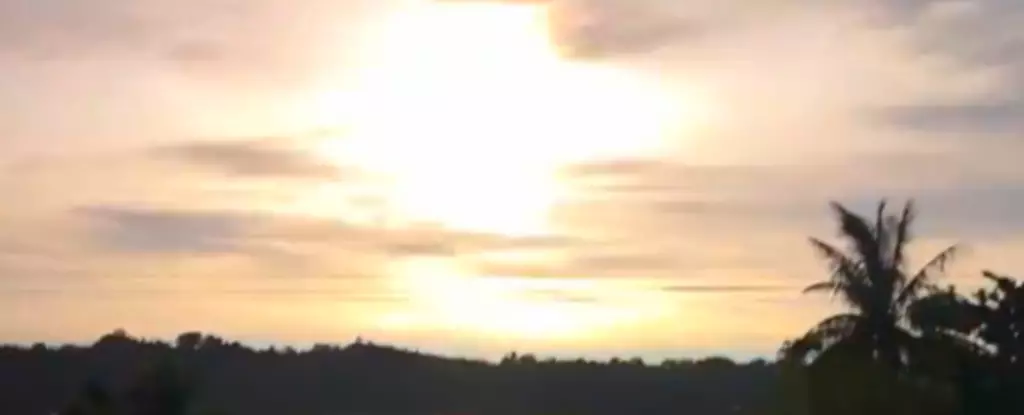The recent sighting of asteroid 2024 RW1 over the Philippines has sparked intrigue and discussion among astronomers and the general public alike. This small asteroid, measuring approximately one meter in diameter, was detected only hours before it collided with Earth’s atmosphere. Fortunately, it posed no threat to our planet. NASA’s Catalina Sky Survey successfully identified 2024 RW1 as it blazed across the sky—in essence, creating a captivating natural display for those lucky enough to witness it. Despite its apparent impact, it merely struck the atmospheric layers where objects of such size invariably disintegrate, producing what can only be described as a brilliant flash.
Witnesses from the northern tip of the Philippines were treated to a spectacular show as a vibrant fireball illuminated the night sky. This moment was captured in a video, where the asteroid’s fiery descent was partially obscured by clouds. Such ephemeral events remind us that even minor cosmic entities can momentarily dominate the sky, instilling awe and curiosity about the universe beyond our immediate blue horizon. Posts on social media have labeled the incident a striking example of astronomical beauty, with viewers expressing their excitement in vibrant, lighthearted exchanges.
While the detection of an asteroid before it enters the Earth’s atmosphere remains relatively rare, the occurrence of small asteroid impacts is surprisingly frequent; an estimated one-meter-sized asteroid arrives every two weeks. The timely observation of 2024 RW1 provides a sense of reassurance about the capabilities of automated sky surveys that scan the cosmic expanse for potential threats. It also serves as a reminder of the complexities involved in classifying hazards and the various sizes and types of space rocks that traverse our celestial neighborhood.
The incident also resonates with a sense of duty regarding planetary defense. While 2024 RW1 was harmless, the consequences of larger asteroids can be catastrophic. The 2013 Chelyabinsk meteor, weighing approximately 18 tons, demonstrates the potential dangers that these celestial objects pose. It detonated in the atmosphere over Russia, resulting in injuries for nearly 1,500 individuals and substantial infrastructural damage. Fortunately, no fatalities occurred, but the event left an indelible mark on the consciousness of those aware of the potential perils of space debris crashing into our atmosphere.
Examining the history of Earth, we can trace the longevity and severity of impacts. The catastrophic Chicxulub event, which played a pivotal role in the extinction of the dinosaurs, serves as a somber testament to the sheer power of large asteroids. Additionally, the Vredefort Crater in South Africa stands as historical evidence of an impactor that excavated the area two billion years ago, illustrating that the threat of significant asteroid collisions is not merely a modern concern but has existed throughout Earth’s geological timeline.
In light of these events, the roles of both NASA and the European Space Agency (ESA) are crucial in ongoing observatory efforts to catalog and monitor the near-Earth object population. Their proactive measures include conducting mock exercises simulating the approach of hazardous asteroids, wherein teams are tasked with formulating an appropriate response strategy based on fabricated updates. These preparations amplify the need for continuous vigilance in the face of cosmic entities that traverse the solar system.
The passage of asteroid 2024 RW1 serves as both a reminder and a celebration of our connection to the cosmos. Though it was a harmless visitor during its brief journey through our atmosphere, it prompts reflection on our place in the universe and the importance of being prepared for the unexpected. Events like these remind us that our planet resides in a vast cosmos filled with both beauty and unpredictability. As we continue to gaze upward, we must remain connected to the intricate dance of celestial bodies that encapsulate the essence of our existence.


Leave a Reply